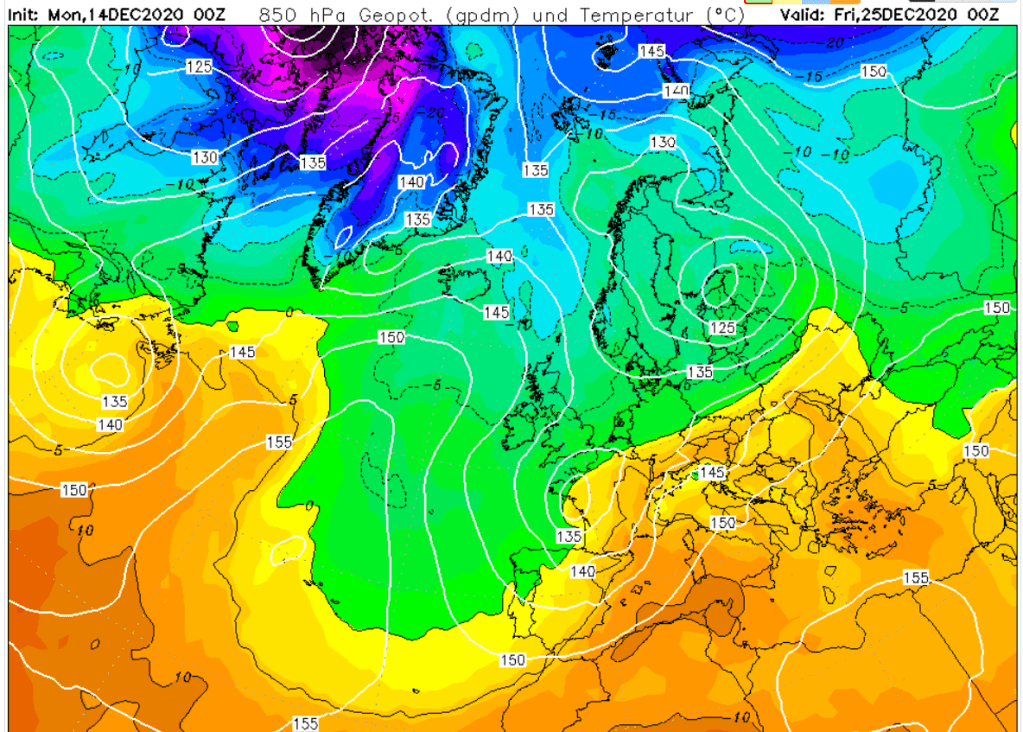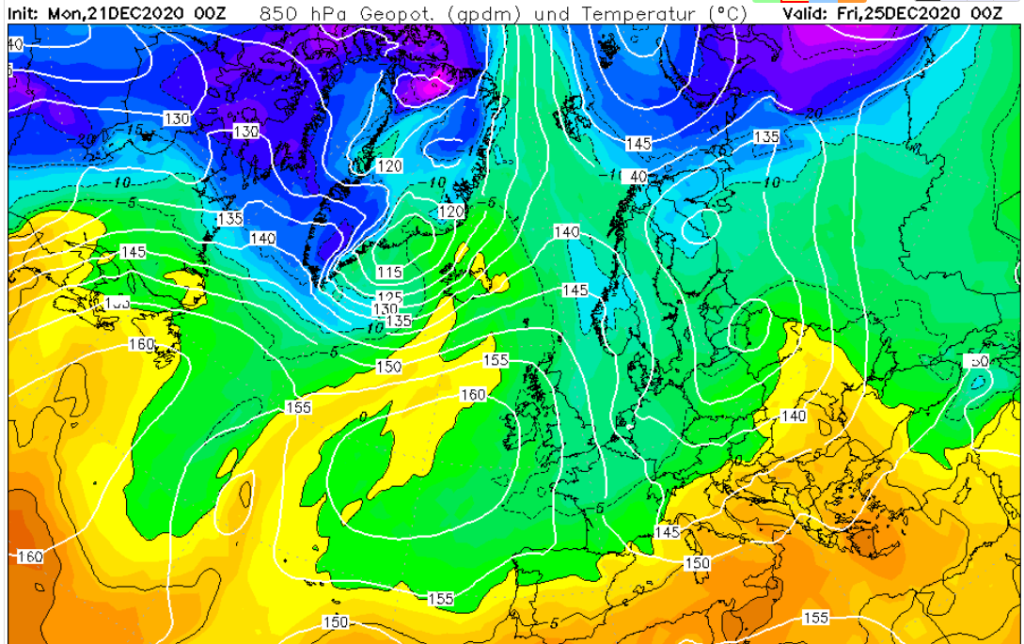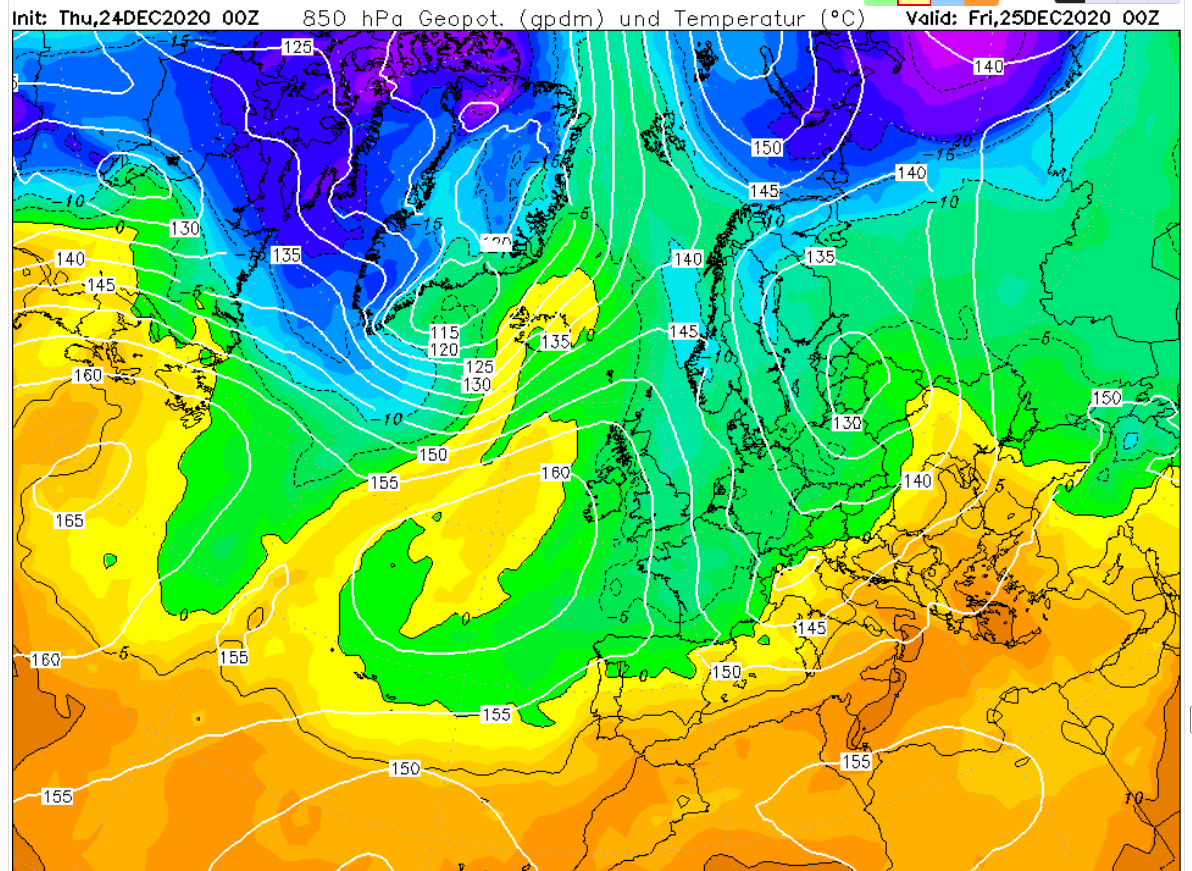With the midnight run of this model bringing the start of the 25th into range the prognosis for the big day is a rare white one – for those north of the border.
The rest of the country is messy mix of sleet and, in London’s case, cold rain with a high of 7C. It looks fairly average for this locality!

But followers of this blog and elsewhere will know that any model output beyond 72 hours should be taken with a very large pinch of salt.
But while conditions out to 15 days are often very different they can give a general guide to how the atmosphere is evolving in the medium range. The last few winters I’ve been doing this Christmas day model blog have revealed that conditions are sometimes not wildly different from what was hinted at 372 hours before.
Over the last few days the GFS, and other models, has been flip-flopping between cold and mild, a symptom of the current atmospheric situation which suggests that the polar vortex may undergo displacement as we progress further into winter. This could signal colder weather for NW Europe – but exactly where this colder weather will be as we progress to the end of the month is very uncertain – any colder than average weather could remain closer toward Central Europe, as happened in 2008.
Below are charts for each day from the midnight operational run of the GFS model.























You must be logged in to post a comment.